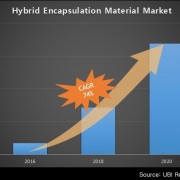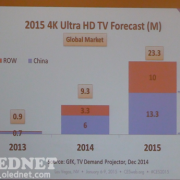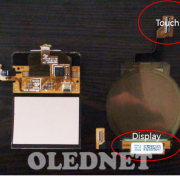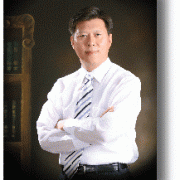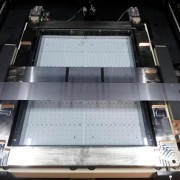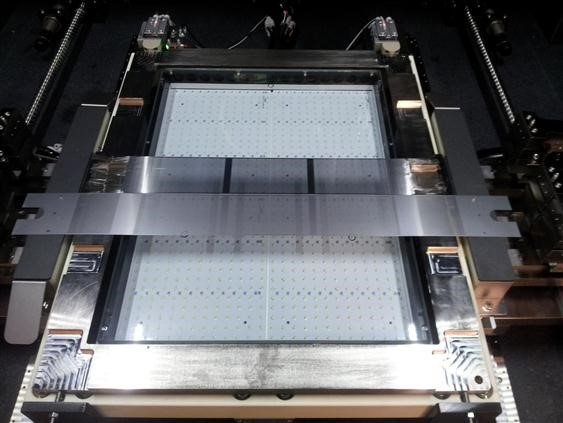[Analyst Column] AMOLED equipped smartphone promotes enlargement of the display on mobile device
According to the “2015 OLED Display Annual Report” published by UBI Research, it was researched that the 5-inch AMOLED display is the main product for a smartphone.
The report shows almost no fluctuation in the number of AMOLED equipped smartphone manufacturers for the last three years from 2012 to 2014 – 13 (2012), 11 (2013) and 14 (2014) – but the major smartphone display size that these companies sold was set in-between 4-inch and 5-inch.
Among 31 AMOLED equipped products, there was only one 5-inch smartphone accounting for 3 percent in 2012, but it has increased to 21 percent with 5 products among 21 in 2013, and 19 products in total of 27 forming 70 percent in 2014.
Samsung Electronics strategized the two elements which are not available in iPhone as points of differentiation to compete with the biggest smartphone rival company Apple. The first plan is targeting the color gamut of LCD. The existing LCD can only reproduce approximately 80% of NTSC which is the broadcasting standard. Although it became possible to enjoy TV and movies through a smartphone with the development of communication technologies, there is a difficulty in reproducing the 500nit of TV quality on a smartphone with the brightness of 200nit. The limit in increasing the brightness of a smartphone is in that the power consumption needs to be minimized to use the smartphone for a long time with the battery. In view of that, Samsung Electronics chose the AMOLED panel as a key strategic part meeting the NTSC standard in low power consumption as an alternative for the LCD panel for the consumers to identify more precise colors. It is expected that the demand for AMOLED panel capable of accurately realizing colors of a product will increase further given the latest growth in shopping clothes with smartphones.
The second plan is in the display size. While iPhone focused on a 3-inch small sized smartphone for a better sense of grip to enhance portability, Samsung Electronics was more focused on “a product of better visibility” rather than “a product of better hand grip”. Obviously the early AMOLED panel has low resolution. Therefore, the bigger display was needed to realize high-resolution as it is hard to fix the opening ratio of shadow mask which is used in manufacturing the pixel for AMOLED panel.
Samsung Electronics succeeded in catching up with Apple, the inventer of smartphone, in terms of the color gamut and size of AMOLED display. Now Apple finally abandoned the matter of grip and expanded the display size to 5-inch.
Although Samsung Electronics was a latecomer compared to Apple in the smartphone market, the choice of AMOLED by Samsung Electronics made the Samsung Electronics of today and also prepared the base for the AMOLED to thrive. In addition, the Samsung Electronics’ strategy enabled the smartphone display in the world to develop into a 5-inch “device to see”.
Choong-hoon Yi, Chief Analyst/ UBI Research


![150216_[Analyst Column] AMOLED 탑재 스마트폰이 모바일용 디스플레이 대형화 주도_eng](http://www.olednet.com/wp-content/uploads/2015/02/150216_Analyst-Column-AMOLED-탑재-스마트폰이-모바일용-디스플레이-대형화-주도_eng.png)

![150202_[Analyst Column] CES2015에서 보여준 TV의 종착역은 명암비](http://olednet.com/wp-content/uploads/2015/02/150202_Analyst-Column-CES2015에서-보여준-TV의-종착역은-명암비.png)
